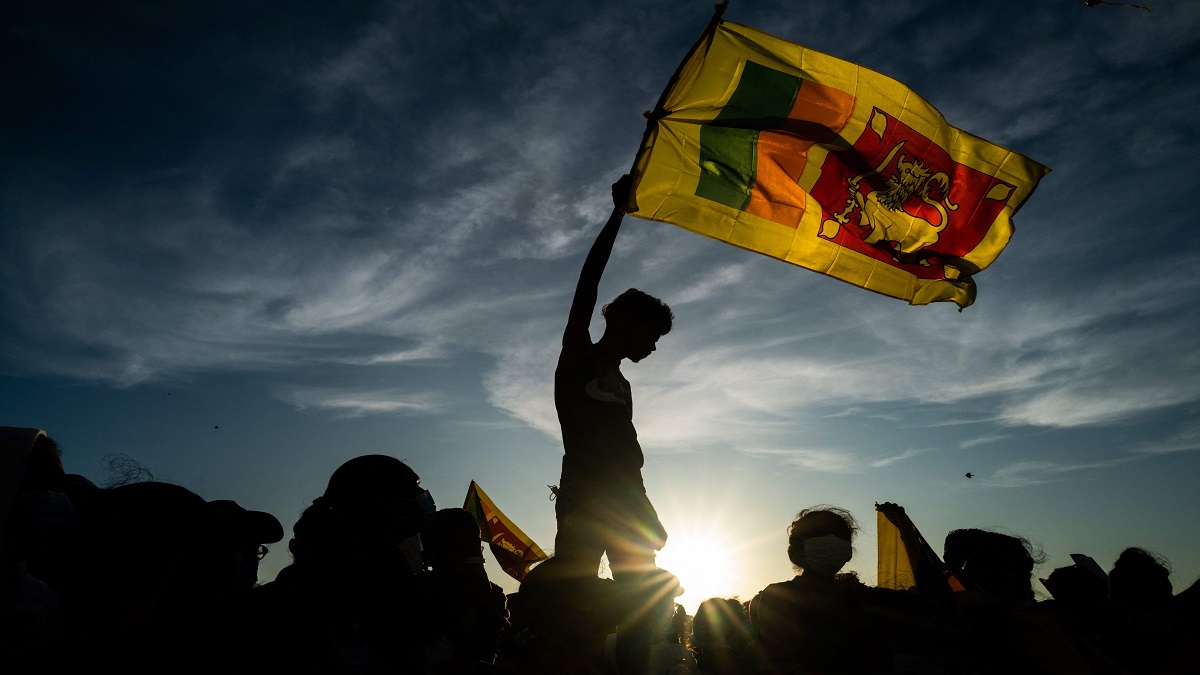Has Sri Lanka recovered from its economic woes?
BY Md. Imran
September 05, 2023

On the 21st of August of 2023, Sri Lanka repaid $50 million, the first installment of the $200 million loan taken from Bangladesh in 2021.
Within 10 days, the second installment, which is $100 million, was paid back to Bangladesh. In this way, the so-called fallen economy of South Asia paid $150 million in total, covering 75% of the loan taken.
So, can we say that Sri Lanka is recovering from its crisis? Can we say Sri Lanka, the ‘Teardrop of India’, has finally wiped out the people’s tears?
Before assessing Sri Lanka’s current economic state, let’s take a look back at the situations that led the country to the economic debacle.
Flashback
Notably, on July 13, 2022, President Gotabaya Rajapaksa’s departure from the country amidst ongoing turmoil highlighted the government’s prior mismanagement. This mismanagement was manifest in their accumulation of substantial foreign debt, resulting in budgetary shortfalls.
Tourism, a cornerstone of Sri Lanka’s economy, also experienced a downturn following the tragic Easter bombings in April 2019. The nation’s foreign reserves suffered a staggering 70% reduction, and foreign direct investment declined. The Chinese investments in major projects were marred by allegations of corruption within the ruling party.
The last pin on the coffin in 2021, Sri Lanka made a bold but detrimental decision to prohibit fertilizer imports, severely impacting food production and the overall economy. This crisis triggered price hikes, with rice, sugar, and oil reaching BDT 250, 260, and 1000, respectively.
As a consequence, Sri Lanka sought assistance from various countries, including Bangladesh, which extended a $200 million currency swap deal thought to be repaid in full by September.
Domestic debt restructuring: A crucial step
One crucial factor in Sri Lanka’s economic revival is launching a domestic debt restructuring framework to rework a significant portion of the country’s $42 billion domestic debt.
Defaulting on foreign debt in May of the previous year, Sri Lanka needed this domestic debt plan to negotiate with bondholders and key bilateral creditors, including China, Japan, and India.
Prime Minister Wickremesinghe highlights that this restructuring effort will lead to reduced interest rates and the commencement of development assistance, a promising outlook for the country’s financial stability.
Inflation tamed: The IMF bailout
Sri Lanka grappled with a severe inflation rate of 69.8% in September the previous year, causing widespread unrest. The nation has achieved a significant feat by reducing its consumer inflation rate from 12% in June to 6.3% in July this year, owing to various contributing factors.
The Central Bank of Sri Lanka (CBSL) points out that tight monetary and fiscal policies, improvements in the supply chain, lower energy and food inflation, and favorable base effects have supported the disinflation process. Moreover, a significant boost came from the IMF bailout of nearly $3 billion in March 2023, which bolstered foreign exchange reserves.
Sri Lanka’s green energy revolution
In other developments, Sri Lanka has unveiled a National Hydrogen Roadmap for a green energy revolution. The roadmap, a collaborative effort between various entities, addresses energy security, affordability, equity, and environmental sustainability through green hydrogen production using renewable energy sources. This indicates the country’s vision in covering up the losses it faced in recent years.
Tourism
In 2018, the country earned a whopping $4.4 billion from tourism, adding 5.6% to its GDP. It is a testament to the potential of the industry. Apart from that, tea export, rice production, apparel, and textile are industries on which the Island’s economy depends.
Has Sri Lanka fully recovered?
Despite signs of recovery, Sri Lanka faces ongoing challenges. High costs of living, increasing food, healthcare, and housing expenses, and rising poverty rates remain concerns. Negotiations to restructure the government’s debt are ongoing, and while progress has been made, there is much work ahead.
Sri Lanka’s export-driven economy is expected to contract by 2% in a year, necessitating stronger reforms in areas like land, labor and state-owned enterprises. The IMF program provides temporary relief, but sustained growth requires further structural improvements.
As Sri Lanka’s economy continues to show signs of recovery, the nation remains cautiously optimistic about its future. Taking this optimism further, India and Sri Lanka have pledged to enhance their economic and energy cooperation, marking a significant step in their growing relationship.
The two countries’ leaders expressed interest in connecting their electricity grids and exploring the feasibility of constructing a petroleum pipeline and a land bridge between the two countries, fostering a historic connection worth $4 billion.
Sri Lanka’s economic recovery faces tough challenges, says World Bank (WB)
To overcome challenges and prevent a prolonged crisis, The World Bank recommends that Sri Lanka initiate a robust and credible structural reform program, including debt restructuring and securing international support to foster sustainable growth and protect vulnerable populations.
The crucial role of debt restructuring
Successful debt restructuring will enhance confidence among investors and development partners, enabling access to global financial markets and much-needed foreign exchange inflows.
Liberalizing fuel trading and energy sector reforms
It is crucial to maintain transparent regulation and governance in the energy sector. As per the WB concerns, increasing the share of renewable energy sources and diversifying energy sources can mitigate the crisis.
Corruption is another obstacle the country needs to eliminate completely from the crisis and maintain its growth.
World Bank’s support and future projects with Sri Lanka
The World Bank has adjusted ongoing projects to address immediate requirements and is developing a new cooperation plan for 2023-2026. It focuses on bolstering Sri Lanka’s economic stability, resilience, and inclusivity and protecting vulnerable groups.
Most Read
You May Also Like